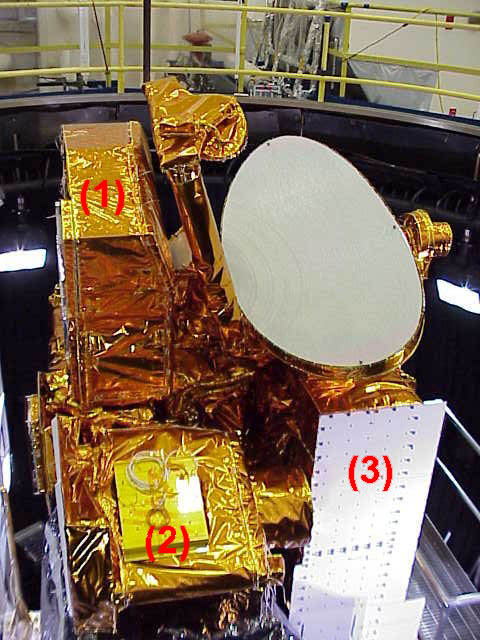Aura MLS Instrument
Instrument Science

They are measured continuously (24 hours per day) by 7 microwave receivers (2 each at 118 and 2500 GHz) using a limb viewing geometry, which maximizes signal intensities and vertical resolution.
MLS is radiometrically calibrated after each 25 second limb scan. Design lifetime is 5 years of continuous operation.
Instrument Modules

- The GHz radiometer module, which includes the 118 through 640 GHz receivers and a scanning offset antenna with 0.8 x 1.6 m primary mirror.
- The THz radiometer module which contains the 2500 GHz receivers and the THz telescope and scan mirror, whose scan is synchronized with that of the GHz antenna.
- The Spectrometer module which receives signals from the GHz and THz radiometer modules, detects and digitizes them, and passes the digitized signals to the spacecraft for telemetry to the ground.
MLS Radiometers and Data Products
| Radiometer | Primary Data Products | Additional Data Products |
|---|---|---|
| 118 GHz |
|
|
| 190 GHz | ||
| 240 GHz |
|
|
| 640 GHz |
|
|
| 2.5 THz |
|
